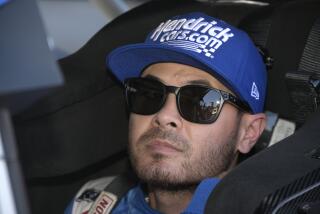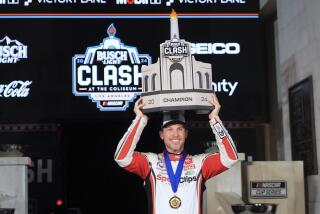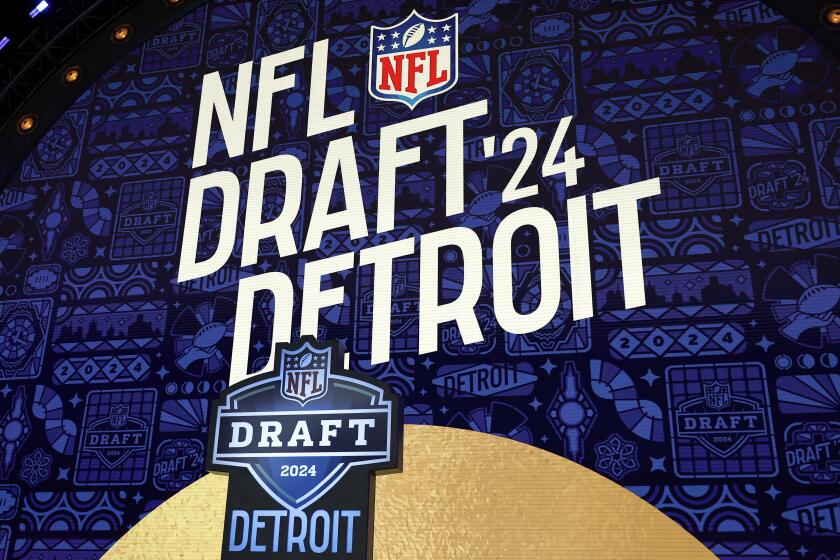IROC Set for Its 30th Season
DAYTONA BEACH, Fla. — The first International Race of Champions was run at a Southern California track that no longer exists, and was won by a legendary driver who was killed in a racing accident the next year.
Yet the unique series persevered and now is set to kick off its 30th season. A dozen drivers from different forms of racing will drive identically prepared cars in four races on four tracks.
IROC’s 2006 season starts next Friday on the high-banked oval at Daytona International Speedway.
Mark Martin, the NASCAR veteran who won the IROC title last year for a record fifth time, heads the field again this year. Martin also holds the record for most IROC victories, 13.
NASCAR Nextel Cup champion Tony Stewart also is in this year’s chase, along with the Indy Racing League’s Scott Sharp, World of Outlaws 2005 Champion Steve Kinser and NASCAR Craftsman Truck series champ Ted Musgrave.
The series will again use racing versions of General Motors’ Firebird Trans Am — even though the street version is no longer in production — with 350-cubic-inch V-8 engines.
The series then moves to Texas Motor Speedway on April 7. The third race, June 29, also is at Daytona, but on the speedway’s 3.56-mile road course. IROC’s last event is Oct. 28 at Atlanta Motor Speedway.
IROC was born on a road course. The inaugural race was Oct. 27, 1973, on the twisty turns of Riverside International Raceway, and Hall of Fame driver Mark Donohue bested the field of Porsche Carreras.
Donahue, who went on to win IROC’s first championship in early 1974, was killed in a crash the following season while practicing for a Formula One race.
The Riverside raceway was shut down in 1988. IROC itself went on hiatus from 1981 through 1983 while the series’ cars underwent a sweeping redesign.
Through it all, IROC’s chief goal hasn’t changed: To come as close as possible to determining the best driver in the world, regardless of the cars — or trucks — he normally drives. (A woman has yet to drive in IROC, although the Indy Racing League’s Danica Patrick would seem a solid choice to make the field one day.)
“As much as racing has changed over 30 years, IROC hasn’t changed much except in technical terms,” said George Signore, the series’ director and brother of IROC President Jay Signore.
The only differences between the cars are their colors and numbers. The drivers are permitted to adjust the position of the seat, steering wheel and pedals — and nothing else.
Another IROC goal is to let the racers simply race, Signore said.
“The drivers do not have to worry about radio communications, except for discussing safety concerns with the tower, and they don’t have to worry about pit stops or strategy,” he said.
“IROC is still the purest racing, where they just go out and run.”
More than 130 drivers have raced in IROC over the three decades, including Mario Andretti, Bobby Unser, Cale Yarborough, Rick Mears, A.J. Foyt, Richard Petty and Emerson Fittipaldi.
There is one noticeable absence on the IROC drivers’ roster this year: The lack of a racer from the Champ Car World Series, the open-wheel series that rivals the IRL.
That reflects scheduling conflicts between IROC and Champ Car, primarily an overlap between IROC’s second race and the Long Beach Grand Prix on April 9, Signore said. IROC had hoped to include reigning Champ Car champion Sebastien Bourdais, he said.
NASCAR drivers have dominated the series’ championships, producing 21 of its 29 title holders. One reason: Many of the IROC races are run at the banked super-speedways, such as Daytona, that the stock car drivers call home, and where they are seen as having an edge when it comes to “drafting” with other cars in close quarters.
But Indy racer Al Unser Jr. is tied with the late NASCAR legend Dale Earnhardt for the second-most IROC wins behind Martin, with 11.
“Little Al” also was the youngest driver to win an IROC race and IROC title, doing both at 24 in 1986.
More to Read
Get our high school sports newsletter
Prep Rally is devoted to the SoCal high school sports experience, bringing you scores, stories and a behind-the-scenes look at what makes prep sports so popular.
You may occasionally receive promotional content from the Los Angeles Times.






